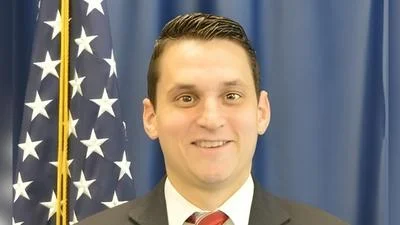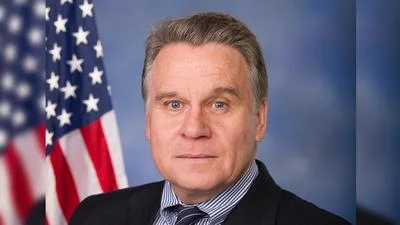The Congressional Record is a unique source of public documentation. It started in 1873, documenting nearly all the major and minor policies being discussed and debated.
“STRATEGIC PETROLEUM RESERVE” mentioning the U.S. Dept. of Energy was published in the Senate section on pages S3600-S3601 on April 2, 2004.
The publication is reproduced in full below:
STRATEGIC PETROLEUM RESERVE
Mr. LEVIN. Mr. President, earlier this week the OPEC cartel announced it would reduce oil production by 1 million barrels of oil per day starting April 1. This move is designed solely for one purpose: to keep pushing up oil prices in the United States and other oil-consuming countries.
Most energy experts say that given current inventory levels in the United States and elsewhere and current consumption rates, OPEC's cuts mean that gasoline prices will likely stay high, hurting American families; jet fuel prices will stay high, hurting our airlines; and diesel fuel prices will stay high, hurting our truckers, manufacturers, and farmers.
As OPEC was planning this price hike, what was the response of the administration? Just a few days before, the Secretary of Energy stated he was not about to go begging for oil.
One step we should take immediately to counteract high prices and OPEC's action is to stop filling our Strategic Petroleum Reserve. This month, the administration is going to put about 200,000 barrels per day of oil into the Strategic Petroleum Reserve. If OPEC's cuts are distributed equally among its customers, this is about how much the OPEC cut will reduce U.S. supplies. Since the U.S. imports about 20 percent of OPEC's output and OPEC plans to cut production by about 1 million barrels per day, about 200,000 barrels per day will be the reduction in the supply to the United States.
Holding off additional deposits into the Strategic Petroleum Reserve would keep about as much oil on the U.S. oil market as OPEC is taking off our market. One way to fight back is to cancel these additional deposits which will otherwise go into the Strategic Petroleum Reserve, which is already 93-percent filled.
Mr. President, 200,000 barrels per day is a lot of oil. It is as much oil as is produced in several of our major oil-producing States. For instance, Oklahoma produces about 180,000 barrels a day. It is about as much as we import from Kuwait. Last year we imported about 205,000 barrels per day from Kuwait.
Over time, 100,000 to 200,000 barrels per day adds up to a significant amount of oil. Over the course of the next year or so, these daily fills will add up to about 50 million barrels of oil. In other words, over the next year or so, the Department of Energy, if it sticks to its plan to continue to fill the Strategic Petroleum Reserve to 100 percent, the DOE will take about 50 million barrels of oil off the market and put them into the Strategic Petroleum Reserve.
If we keep that oil in the market, in the private sector, we would get both short-term and long-term benefits. The day after the Senate passed the amendment which I offered with Senator Collins to cancel the planned delivery of 50 million barrels of oil into the Strategic Petroleum Reserve, prices on the New York and London crude oil exchanges fell by more than $1, just on the news that the Senate had acted, even before anyone knew whether the House would follow suit. Prices rose back to their previous levels when the Department of Energy and some key Members of Congress said that the DOE should keep putting that oil into the Strategic Petroleum Reserve.
The market's reaction to the news that the Strategic Petroleum Reserve deliveries might be canceled is good evidence of how the market will react to the cancellation of those deliveries. We should listen to what the market is telling us. Keeping 50 million barrels of oil on the market rather than putting them into the reserve will enable our private sector inventories to build back to normal levels. They have not been at normal levels for some time now. They have been well-below normal and recently fell to historic lows.
If we restore those private sector inventories, this will reduce prices substantially, and most experts agree that absent some type of additional supplies in the market, oil and gas prices are going to stay very high.
I want to make it clear that we are not proposing removing oil from the Strategic Petroleum Reserve at this time. What we are talking about is simply to stop putting even more oil into the reserve which is already 93 percent of capacity.
The administration says the daily addition is too small to make a difference in the price of oil. This is wrong for two reasons.
First, the amount the DOE is putting into the reserve each day is a lot of oil. Second, the administration's position ignores the long-term effect of putting these barrels of oil into the Strategic Petroleum Reserve--and this is the DOE's own staff I am going to quote. This is what DOE's own staff said:
Essentially, if the reserve inventory grows, and OPEC does not accommodate that growth by exporting more oil, the increase comes at the expense of commercial inventories. Most analysts agree that oil prices are directly correlated with inventories, and a drop of 20 million barrels over a 6-month period can substantially increase prices.
In fact, commercial inventories did fall on average by 20 million barrels in each of the three successive 6-month periods following the DOE staff's warning.
The Department of Energy's own staff who operates the Strategic Petroleum Reserve recommended against buying more oil for the Strategic Petroleum Reserve in tight markets.
In the spring of 2002, as prices were rising and inventories in the private sector were falling, this is what the Department of Energy staff warned:
Commercial petroleum inventories are low, retail product prices are high and economic growth is slow.
This is DOE staff's bottom line:
The Government should avoid acquiring oil for the Reserve under these circumstances.
Commercial petroleum inventories are low,--
They are still at an all-time low.
retail product prices are high--
They are at an all-time high now.
and economic growth is slow.
And it does continue to be sluggish. This is what their bottom line is:
The Government should avoid acquiring oil for the Reserve under these circumstances.
The administration chose to ignore those warnings. The reserve deliveries proceeded, and just as the DOE staff predicted, supplies tightened and prices climbed.
The administration continues to ignore the advice of these experts at the reserve, and American consumers are paying the price.
A wide variety of experts outside the Department of Energy has stated that filling the reserve during tight oil markets increases oil prices. This January, Goldman Sachs, which is the largest crude oil trader in the world, said the following:
Government storage builds will provide persistent support to the markets--
meaning filling the reserve pushes prices up, and
Government increases in storage lowered commercially available petroleum supplies.
Bill Greehey, who is the chief executive of Valero Energy, the largest independent refiner in the United States, has criticized the administration for filling the reserve when commercial inventories were low, thereby preventing increases in the commercial inventories.
Last September, when oil prices were at $29 a barrel, Greehey complained the reserve program was diverting oil from the marketplace. Here is what he said:
If that was going into inventory, instead of the reserve, you would not be having $29 oil, you'd be having $25 oil. So, I think they've completely mismanaged the strategic reserve.
Now that is the chief executive of the largest independent refiner in the United States.
One of the top energy economists in the country, Phil Verleger, estimates the reserve program has added $8 to $10 to the price of a barrel of oil.
Economist Larry Kudlow said:
Normally, in Wall Street parlance, you're supposed to buy low and sell high, but in Strategic Petroleum Reserve actions, we're buying higher and higher and that has really helped keep oil prices high.
Now that is from a conservative economist.
In an article explaining why oil prices are so high, a recent issue of the Economist reported the following:
Another factor . . . propping up oil prices may be what [a] trader calls ``supply disruption risk.''
Here is what the Economist went on to say:
These worries have, in part, been fueled by a most unexpected source, the American government. Despite the high prices, American officials continue to buy oil on the open market to fill their country's strategic petroleum reserves. Why buy, you might ask, when prices are high, and thereby keep them up? The Senate has asked that question as well. It passed a nonbinding resolution this month calling on the Bush administration to stop SPR purchases, but Spencer Abraham, the Energy Secretary, has refused.
In January, the Petroleum Argus, an energy industry newsletter, stated the following:
The act of building up strategic stocks diverts crude supplies that would otherwise have entered the open market. The natural time to do this is when supplies are ample, commercial stocks are adequate and prices low. Yet the Bush administration, contrary to this logic, is forging ahead with plans to add [more oil] to the stockpile.
After the Senate passed our amendment that said we should hold off further purchases, Todd Hultman, who is president of Dailyfutures.com, a commodity research provider, was quoted as saying the amendment:
. . . makes good sense and is designed to make more crude oil available at a time when unleaded gasoline prices have been making new record highs.
Last summer, Dr. Leo Drollas, chief economist at the Centre for Global Energy Studies, criticized the Strategic Petroleum Reserve program:
They've continued filling the reserve, which is crazy, putting the oil under the ground when it is needed in refineries.
Now that is why the Senate, with support from both Republicans and Democrats, recently approved an amendment, which I offered with Senator Collins, to stop Strategic Petroleum Reserve shipments, sell the oil that would have been placed in the reserve and use the money from those sales for important homeland security programs.
Fifty-three House Members, 39 Republicans and 14 Democrats, recently wrote the President requesting a suspension of SPR petroleum reserve shipments. The House letter states the following:
Filling the SPR, without regard to crude oil prices and the availability of supplies, drives oil prices higher and ultimately hurts consumers.
The administration still chooses to ignore common sense and it adds oil to the Strategic Petroleum Reserve, no matter how high the price or how tight the supply of oil.
Even though this discussion is about suspending additional deposits into the Strategic Petroleum Reserve when prices are high and private and commercial inventories are low, I would like to comment on a misimpression regarding what happened the last time the Strategic Petroleum Reserve was actually used to release oil. Again, we are now shifting the discussion from talking about not putting more oil to the reserve to what happened last time we took oil out of the reserve. This is what happened during the Clinton administration when 30 million barrels were taken from the reserve and put on the private market. This was in September of the year 2000. Here is what the Washington Post recently stated:
The last time an administration tapped the Strategic Petroleum Reserve, the impact on price was negligible. When President Bill Clinton ordered the sale of 30 million barrels of oil on September 22, 2000, the average price of regular gas had climbed to more than $1.56. By October 24, when the oil began to hit the market, prices had slipped one penny, according to the Energy Department's Energy Information Administration.
Well, that statement is highly misleading because it omits critical information. Here is the full story: On September 22, 2000, with crude oil prices at $37 a barrel, home heating oil stocks at historic lows and winter around the corner, President Clinton ordered the release of 30 million barrels from the Strategic Petroleum Reserve. Within a few days of the announcement of the release, crude oil prices had fallen by
$6 a barrel. Within a week, home heating oil prices fell by 10 cents per gallon. Within 2 weeks, wholesale gasoline prices had fallen by 14 cents per gallon.
So what the statement omitted is what happened to oil and gas prices immediately after the order for the release of that 30 million barrels from the Strategic Petroleum Reserve. There was an immediate impact downward on gasoline prices, wholesale prices for home heating oil, in the amounts of 10 cents a gallon for home heating oil and 14 cents a gallon for gasoline. So the statement that gasoline prices on October 24, a month later, were only a cent lower than on September 22 omits the critical information that oil and gasoline prices fell significantly immediately after the release but then rose later due to unrelated events in the Middle East.
Two weeks after the release, crude oil prices were still $6 per barrel lower than the prerelease prices and wholesale gasoline prices were 14 cents per gallon lower. Only when a wave of violence hit the Middle East during the third week after the release did gasoline prices rise to their prerelease levels.
So the release of 30 million barrels of reserve oil during the Clinton administration did have a significant, immediate effect on oil and gas prices downward.
Just as taking oil out of the reserve can significantly affect prices, putting oil into the reserve can have a significant effect as well. That is what is going on now. The administration should listen to its energy experts and the economists and stop adding oil to the Strategic Petroleum Reserve which is already 93 percent full. The result will be lower oil and gasoline prices, a welcome relief to American consumers, manufacturers, and airlines.
Mr. President, I yield the floor and suggest the absence of a quorum.
The PRESIDING OFFICER (Mr. Thomas). The clerk will call the roll.
The assistant journal clerk proceeded to call the roll.
Mr. McCONNELL. Mr. President, I ask unanimous consent that the order for the quorum call be rescinded.
The PRESIDING OFFICER (Mr. Chafee). Without objection, it is so ordered.
____________________








